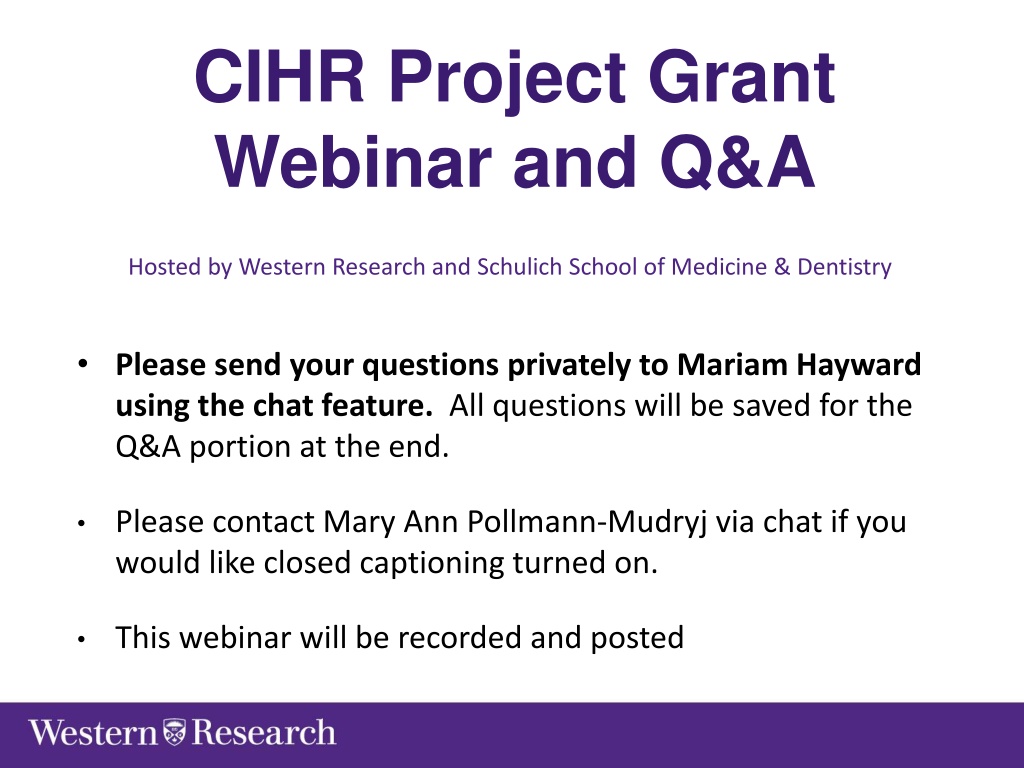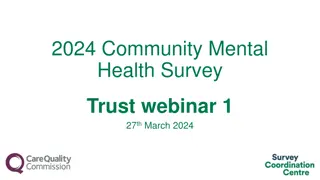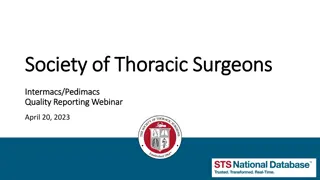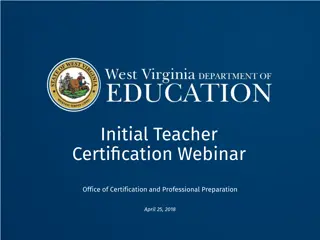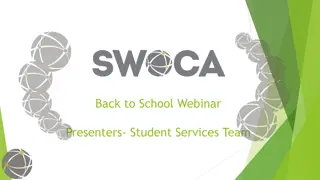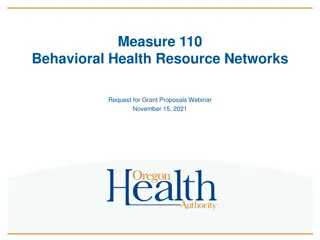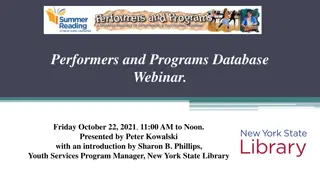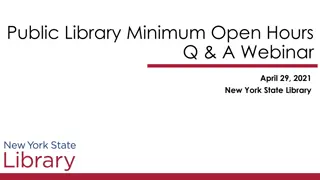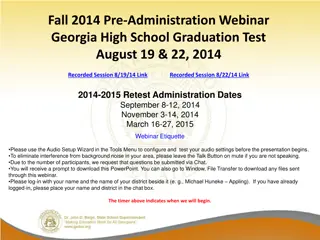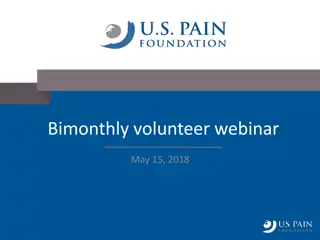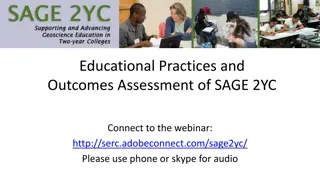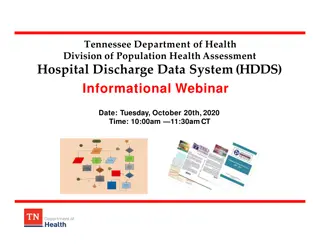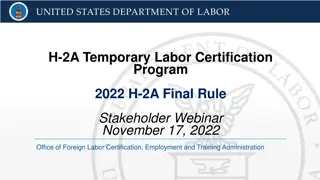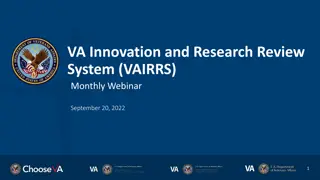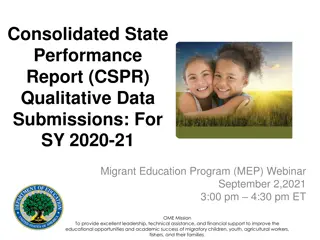Webinar and Q&A
The latest updates for the CIHR Project Grant competition, including changes, criteria, and eligibility details. Gain insights on sex and gender-based analysis, equitable access to funds, and new opportunities for researchers.
Download Presentation

Please find below an Image/Link to download the presentation.
The content on the website is provided AS IS for your information and personal use only. It may not be sold, licensed, or shared on other websites without obtaining consent from the author.If you encounter any issues during the download, it is possible that the publisher has removed the file from their server.
You are allowed to download the files provided on this website for personal or commercial use, subject to the condition that they are used lawfully. All files are the property of their respective owners.
The content on the website is provided AS IS for your information and personal use only. It may not be sold, licensed, or shared on other websites without obtaining consent from the author.
E N D
Presentation Transcript
CIHR Project Grant Webinar and Q&A Hosted by Western Research and Schulich School of Medicine & Dentistry Please send your questions privately to Mariam Hayward using the chat feature. All questions will be saved for the Q&A portion at the end. Please contact Mary Ann Pollmann-Mudryj via chat if you would like closed captioning turned on. This webinar will be recorded and posted
Agenda 1. Summary of Changes Mary Ann Pollmann-Mudryj (Schulich) Summary of Progress Jane Rylett (CIHR) Response to Previous Reviews and Appendices Tim Regnault (Schulich) Administrative Considerations Cass Latinovich (Research Services) KEx Considerations Mariam Hayward (Research Services) EDI and SGBA+ Considerations Nicole Kaniki (Research Services) Q&A 2. 3. 4. 5. 6. 7.
Summary of Changes
Summary of Changes to Spring 2021 Project Grant Competition Summary of Progress (Mandatory; 2 pages) o Progress/Productivity o COVID-19 Impact on your Research o ECRs (For Early Career Researchers who have held a Foundation grant) o Budget Requested in Relation to Overall Funding Held Currently or Pending Applicant Profile CV (Max 3 pages) o CIHR has template o Can be used by knowledge users, indigenous leaders and international applicants
Summary of Changes to Spring 2021 Project Grant Competition Sex and Gender Based Analysis (SBGA) o Reviewers must factor the assessment of sex (as a biological variable) and/or gender (as a socio-cultural factor) into the written evaluation and overall score, by considering its integration as a strength, a weakness or not applicable to the proposal. Removal of Weighted Scores o One score provided to reflect all 3 evaluation criteria Ensuring Equitable Access to Research Funds o Early Career Researchers o Female Applicants o Applicants submitting applications in French
Summary of Changes to Spring 2021 Project Grant Competition Entry of Foundation grant-holders o This is the first competition where non-ECR Foundation grant-holders are eligible to apply for Project Grant. Indigenous Health Research o Individuals affiliated with Indigenous nongovernmental organizations in Canada with a research or knowledge translation mandate can apply as Nominated Principal Applicants
Summary of Progress
Purpose of Summary of Progress Part of applications beginning Spring Project Competition 2021 - this is a revised Summary of Progress - not the same as Summary of Progress used in Open Operating Grants Program - content has much wider scope than the original Summary of Progress Required for all Nominated Principal Applicants - important at all career stages Two pages in length - outline all current and pending funding held by the Nominated Principal Applicant - describe how the current proposal fits with your program of research and funding
What to Include in Summary of Progress Describe funding being requested for this project in context with other parts of research program - opportunity to provide reviewers with details about: o expertise as it relates to the proposed research o composition of research team o progress towards development of proposal that demonstrates likelihood of success o impacts on research program, such as COVID-19 Discuss productivity on related projects and relationship to current proposal Opportunity to tailor Summary of Progress to career stage - ECRs - Mid-career and other investigators - Foundation grant recipients
Response to Previous Reviews and Appendices (Other application material)
Rebuttal and Purpose As in previous competitions, if resubmitting an unsuccessful application, you may provide a response (up to 2 pages) to previous reviewers comments. To address concerns that where previously highlighted as dampening enthusiasm for the application. Applicants who upload a response to previous reviews must include all the reviews and SO Notes (if available) received in that round of submission (NB: the reviews do not count toward the 2 page response limit). You do NOT have to respond to all the comments in the reviews, only those that are relevant to your revised application. Reviewers are not obligated to read your response if you do not include all the previous reviews, and they will note this. Remember whereas we try to send resubmissions to previous reviewers , its not always the case.
Top tips Follow the instructions for submitting a response to previous reviews Use language/style to lead reviewer to the revised/addressed sections in application Adhere to page/font and text requirements Maintain appropriate respectful responsive tone
Appendices (Other application material) Reviewers are under NO obligation to read the attached materials. Letters of support, up to five pubs, surveys etc Should reviewers decide to consult the attachments, they must declare it in their reviews and at the committee meeting. Top tips Use only if absolutely necessary. Your research proposal should stand alone (i.e. it should contain all the information required to support your research plan and should contain a complete description of your project) Remember, within the allotted page limitations (10 or 12), the research proposal may be comprised of text, tables, charts, figures and photographs, as required. Don t overdo it with everything, but the kitchen sink
Submission Process and Administrative Considerations
Internal Submission Process The internal submission process has changed; Applicants are encouraged to submit a complete draft application in ResearchNet by March 19th. The intent is timely and comprehensive compliance reviews, as well as KEx and EDI support. Please Note: Submitting in ResearchNet will not submit the application to CIHR. Applications will be reviewed in order they are received in the Portal. Fine tuning of applications after the internal deadline is expected! Continue working offline on application components. Applications will be returned for final edits once the review is complete. Submit a complete draft for review; no placeholder docs, all sections complete, team members invited etc.
Administrative Tips Participants Invite team members as soon as possible so they can contribute their CV (as applicable), and Collaborators have time to obtain/provide a validated CIHR PIN. Partners If you have any partners contributing cash and/or in-kind, get their Letters of Support before the internal deadline. Collaborator Letters (optional) Are letters current/signed? Have one from each Collaborator. CCV Ensure research funding is correctly entered as On-Going Grants or Completed Grants. Budget Ensure information consistency, such as staff and trainees quantity and tasks, between the Research proposal and the budget. Open access should be considered when justifying publishing costs. NPA s Sex and Gender-Based Training Module Certificate of Completion Certificate issued as a secured document you must change to unsecured in order to upload.
Resources & Contacts Help sheets and additional resources are located on the Western Research CIHR Project Grant page https://www.uwo.ca/research/funding/external/cihr_Project.html Application Support Content review contact your faculty Research Officer Administrative questions researchoffice@uwo.ca iKT, Partner and/or Knowledge User, projects involving Indigenous research or general KEx questions mariam.hayward@uwo.ca SGBA+ and/or Equity, Diversity & Inclusion questions nkaniki@uwo.ca
Knowledge Translation
Knowledge Translation KT is integrated across all 3 evaluation criteria pointing to the importance of integration despite no specific section on KT CIHR recognizes two types of KT: integrated (iKT) and end-of-grant. Both require dissemination plans!
KT Supports We are here to help! Knowledge Exchange Canvas Development of KT plan Review of draft applications Integration of KT throughout application Support for integrated (iKT) applications Terminology (partner, iKT, end-user, broker) Indigenous research support Identifying available institutional resources to support KT and open access
Top Tips Integrate KT throughout your application to increase research impact & significance, feasibility and capability scores! Integrate key pieces from your application into your KT plan (HQP, partners/end-users, outputs and outcomes, evaluation, EDI) It s in the details! A concrete plan lays out the what, who, how, when and why.
Top Tips Link your KT plan to your expertise/experience to enhance capability and feasibility scores Utilize resources brokers, training, connections/networks, vested commitment of stakeholders Build in evaluation where feasible Ensure alignment with your budget Use multifaceted KT strategies where possible
Mariam Hayward Knowledge Exchange and Impact Manager Western Research E: mariam.hayward@uwo.ca www.uwo.ca/research/services/kex
Equity, Diversity and Inclusion
Project Grant EDI Requirements Does this application propose research involving Indigenous Peoples? Does your proposal address the TCPS 2 - Chapter 9 Research Involving the First Nations, Inuit and M tis Peoples of Canada and Indigenous partnering community/organizational ethical guidelines? Please note that at the time of application submission, the research proposal must also explicitly describe engagement with the community in relation to the research. Is sex as a biological variable taken into account in the research design, methods, analysis and interpretation, and/or dissemination of findings? Is gender as a socio-cultural factor taken into account in the research design, methods, analysis and interpretation, and/or dissemination of findings? If yes, please describe how sex and/or gender considerations will be integrated into your research proposal. If no, please explain why sex and/or gender are not applicable to your research proposal. Attachments: Certificate of Completion for the sex- and gender-based analysis training modules for the NPA
EDI in Research Grants: Best Practices 1. 2. 3. Incorporate EDI principles throughout the entire application Present concrete strategies to ensure EDI excellence Relate EDI strategies to the team s specific research context within the institution Identify and remove barriers rather than working around them Build EDI support into the project/program structure and budget 4. 5. DOING or DONE is better than WILL DO! https://www.uwo.ca/research/services/resources/edi.html https://www.uwo.ca/research/Restricted_All/ediquestions.html
Upcoming Events Other upcoming sessions English CIHR Webinar: March 10, 11am - noon ET French CIHR Webinar: March 10, 1-2pm ET Western Drop in Q&A Sessions: 10-11am ET March 12, 19 and 26 The slides and recording from this webinar will be posted to Western s Project Grant page
